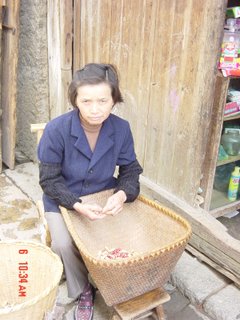By Terry R. Cassreino
NANCHANG, China - I don’t know what it is about these beds in this hotel room, but it’s like sleeping on a rock.
Couple the fact that the beds are hard as hell with a so-so air conditioning system and you get so-so sleep through the night.
Yes, that’s right. The air conditioning still isn’t right. It’s slightly cool in here, but not cold. No one seems to be able to fix it.

On tap for today is a tour of an historic pagoda, the Tengwan Pavilion, not too far from our hotel on the banks of the Gan River. The building is beautiful.
The pavilion was built in the Tang Dynasty when Prince Tengwang - the younger brother of Taizong Emperor - governed what is present day Nanchang.
Also today, Holt families will take their children to have their passport photos made.
We are expected to receive their passports today, the last step before heading to Guangzhou on Saturday to start the paperwork for their U.S. entry.
And tonight, it’s off to the East Restaurant for one last group dinner in Nanchang.
If time permits, Pam and I hope to take the baby shopping for one last time to dowtown Nanchang. That, however, depends on the timing of everything else.
Copyright 2006 by Terry R. Cassreino. Photo courtesy of the Gloria Plaza Hotel.

















